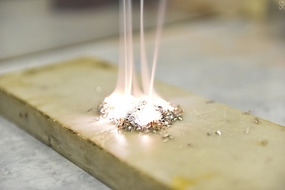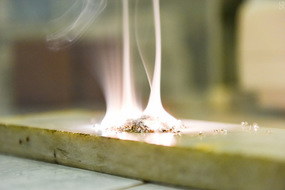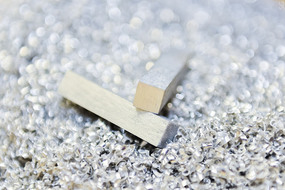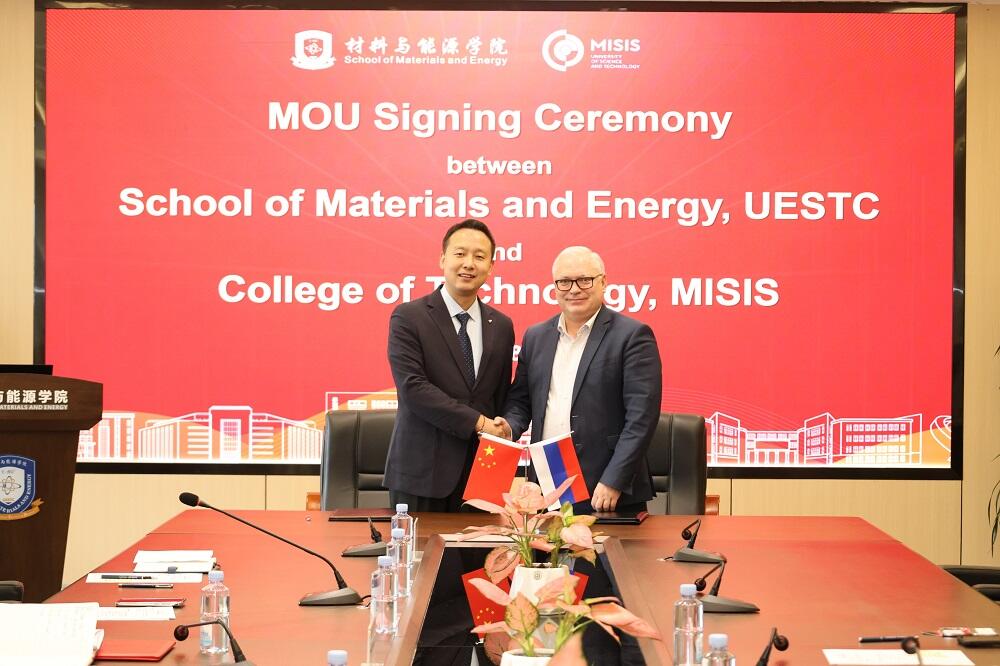Materials scientists from NUST MISIS have come up with an effective and economical way to produce a durable and corrosion-resistant magnesium alloy for use in the automotive and aerospace industries.
A new type of flux (a purifying agent used in metallurgy) developed by the researchers allows for the creation of a unique alloy with improved stress-strain characteristics and corrosion resistance properties. The use of magnesium parts contributes to an aircraft or vehicle`s weight reduction. Currently, commercial testing of the technology is being conducted on domestic aircraft manufacturing enterprises —Kamensk-Uralsky Foundry, UEC Saturn, and the Kazan Engine Building Industrial Group, among others.
Magnesium, a very lightweight metal, has a density significantly below that of titanium and aluminum (1.73 grams per cubic cm compared with 4.5 and 2.7 grams, respectively).For aviation and space, where there is a struggle for every kilogram of fuel, this change produces a significant difference. Traditionally, the poor corrosion resistance characteristics of Russian-made magnesium alloys have precluded them from widespread use in aviation, rocketry and the automotive industry. This negatively affects the competitiveness of Russian equipment on the world market.
A characteristic of magnesium alloys is their high reactivity in a molten state, which makes melting in the air impossible without special protective measures which prevent contact of the melt surface with the air.
Magnesium alloys have a high level of chemical activity in their molten state, meaning special protective measures — in the form of a low melting-temperature flux applied to the surface to protect the metal from ignition and oxidation, are required. The traditional melting and refining process requires an average of 300 kg of flux for every ton of magnesium alloy produced.
Another problem associated with magnesium alloy production is impurities, particularly chlorides. A high quality magnesium alloy requires that these impurities be absent; otherwise, the alloy’s corrosion resistance and stress-strain performance characteristics are not sufficient for high-technology applications such as the automotive and space industries.
“The developed flux uses carnallite, an evaporate mineral readily available in the Russian Ural Mountains, which when combined with a 30% mixture of calcium chloride creates a flux with a strong purifying effect. The improved compositions and production method provide good flowability and a long period from the application of flux up to the moment of the first fire source on the surface of molten metal, and most importantly, a complete lack of defects on salting inclusions. As a result, the technology allows for the casting of magnesium alloys with improved corrosion resistance, reduces material losses in alloying components, and allows for the creation of an alloy with a more stable chemical composition”, said Anton Nalivaiko, head of the project, senior researcher at NUST MISIS Center for Engineering and Industrial Technologies.
The use of the technology developed under the leadership of Professor Vadim Tarasov, NUST MISIS Department of Nonferrous Metals and Gold, in partnership with University`s industrial partner OK Stroibis [Russia’s largest producer of auxiliary materials for non-ferrous metallurgy] will help eliminate the formation of toxic barium-containing slag, improve the quality of the magnesium alloy produced, increase its competitiveness in domestic and export markets, and, ultimately, improve the prospects for import substitution in the aerospace and automotive sectors of Russian industry.
Use of the new flux technology on an industrial scale will bring the cost of magnesium casting down





